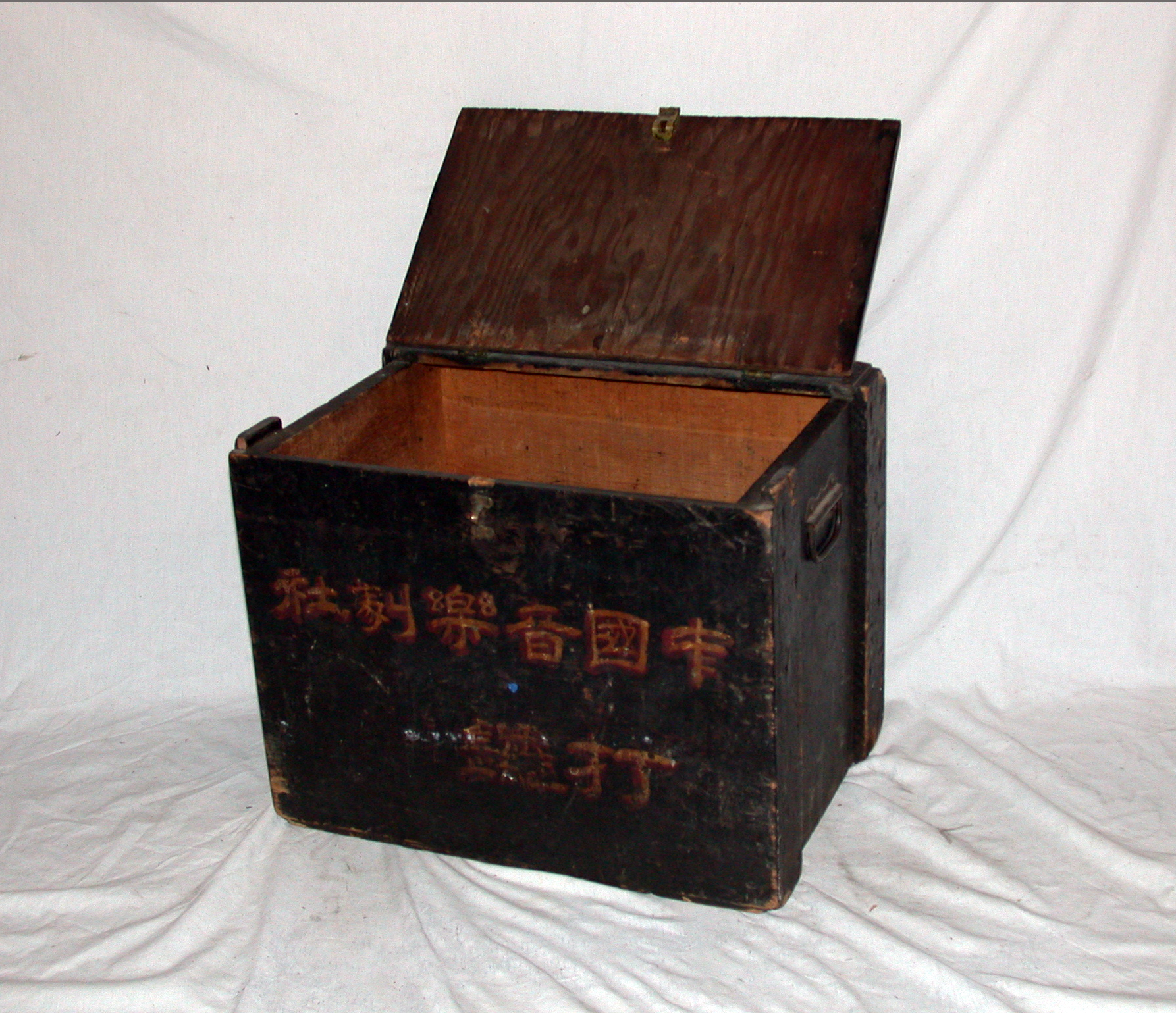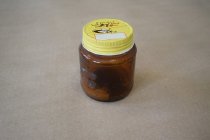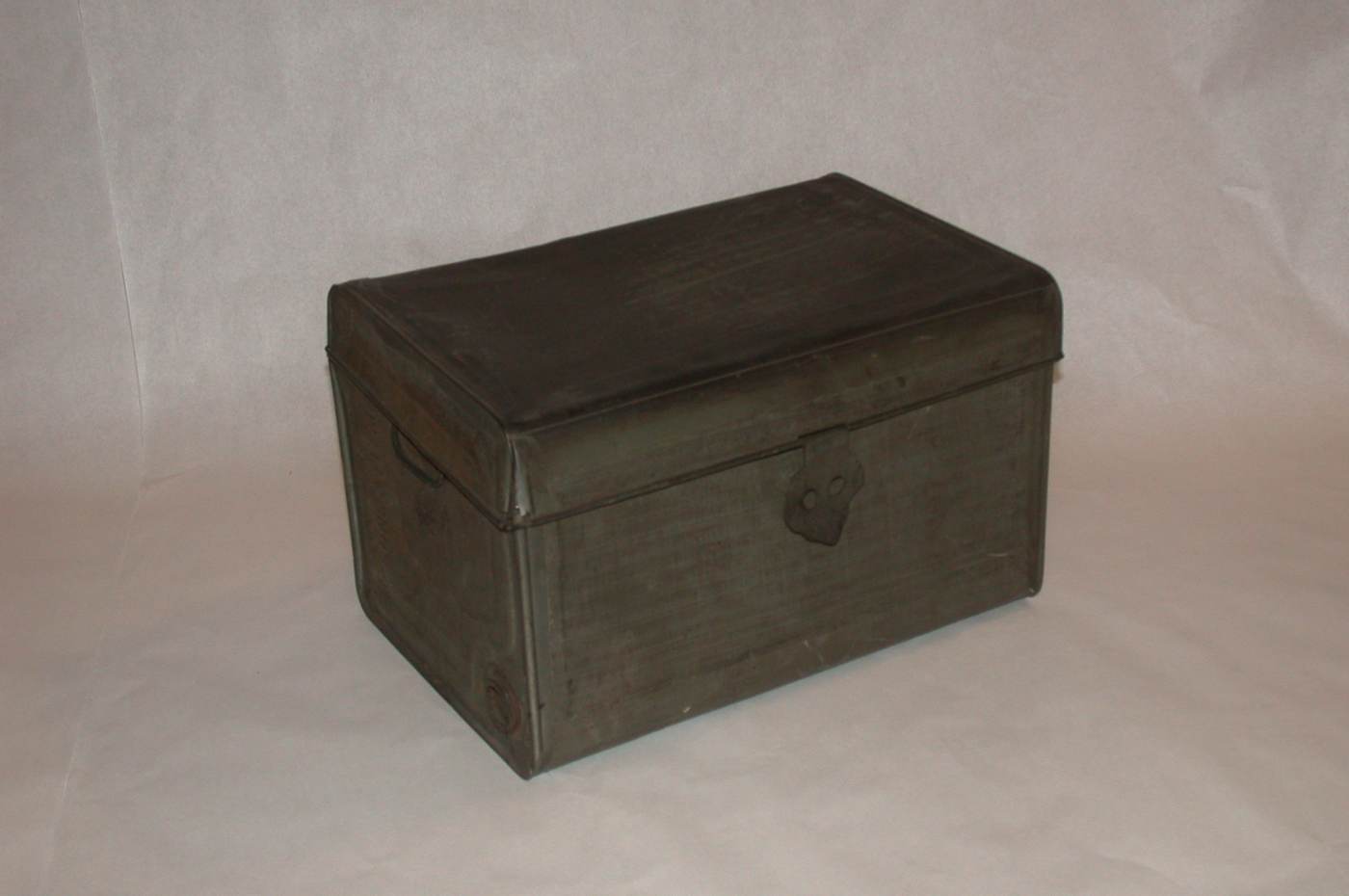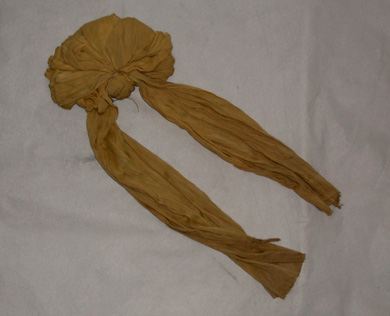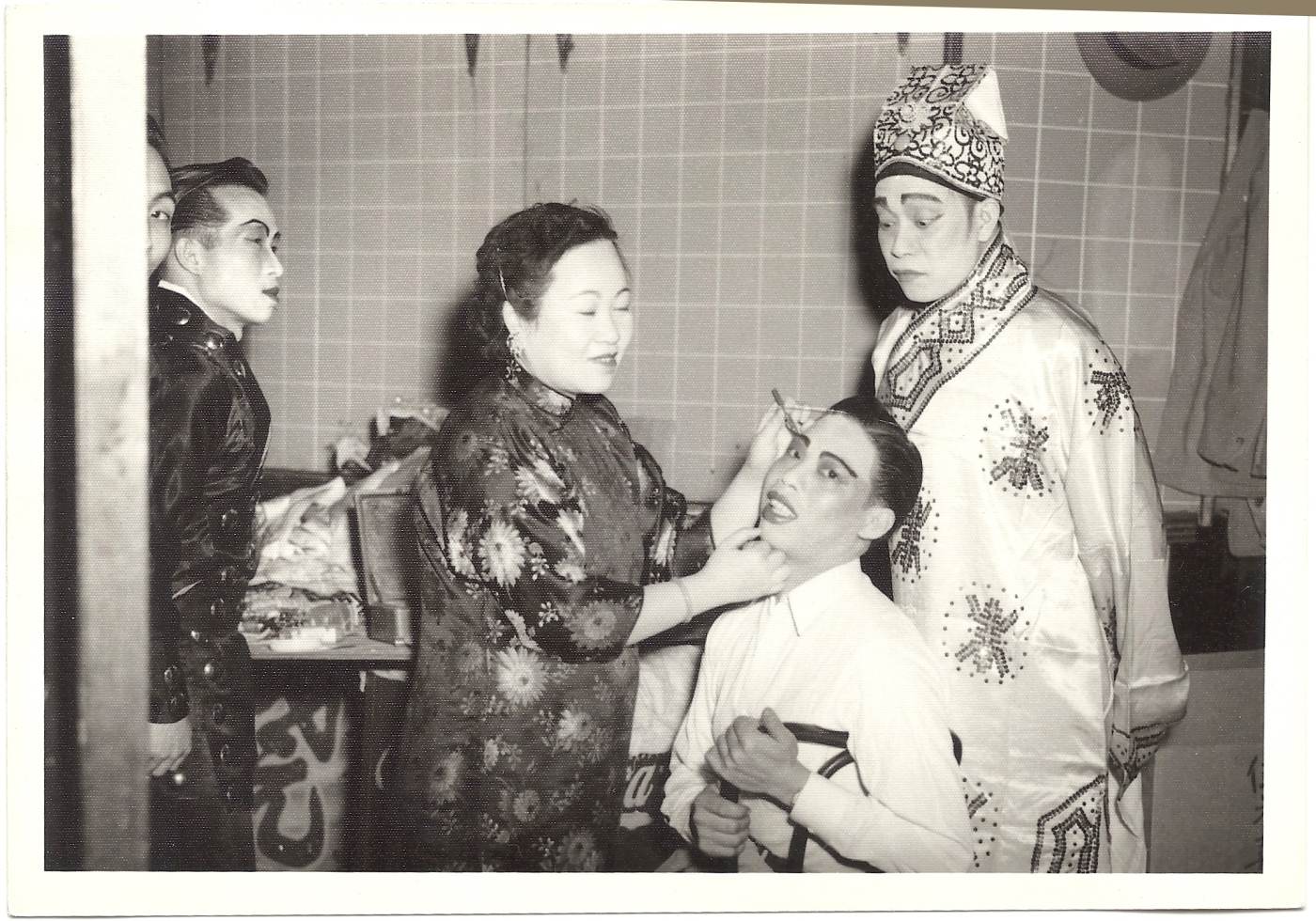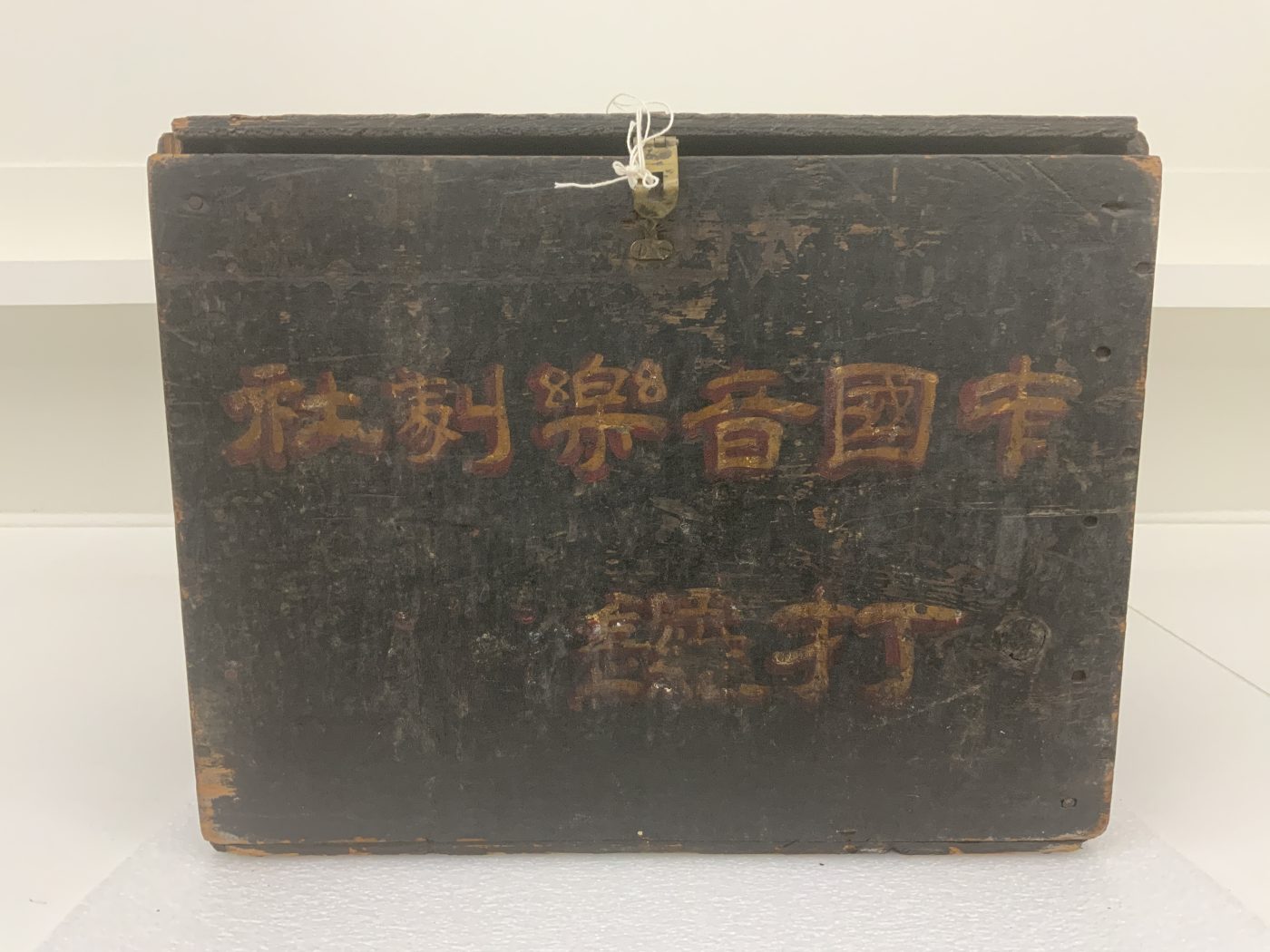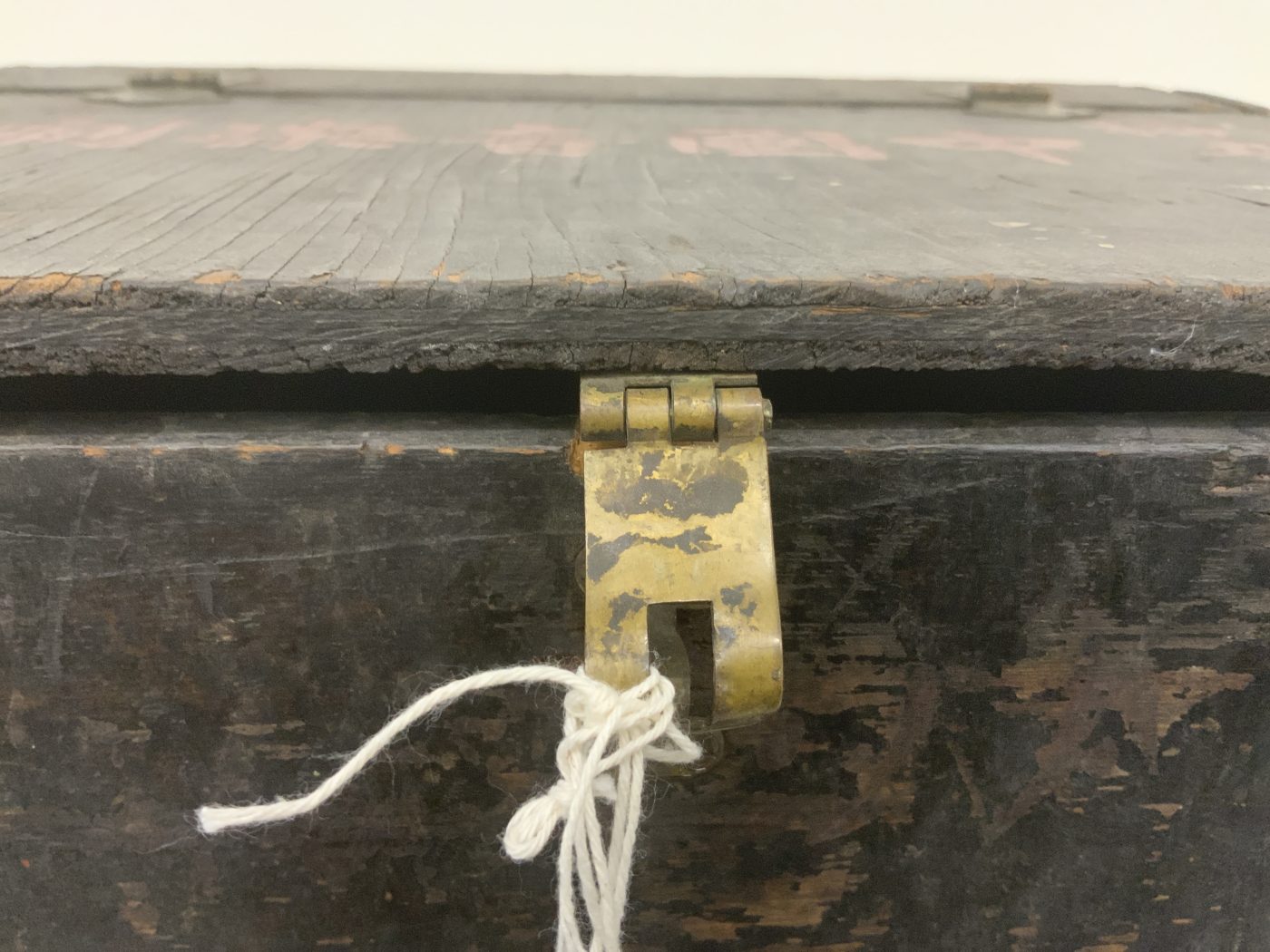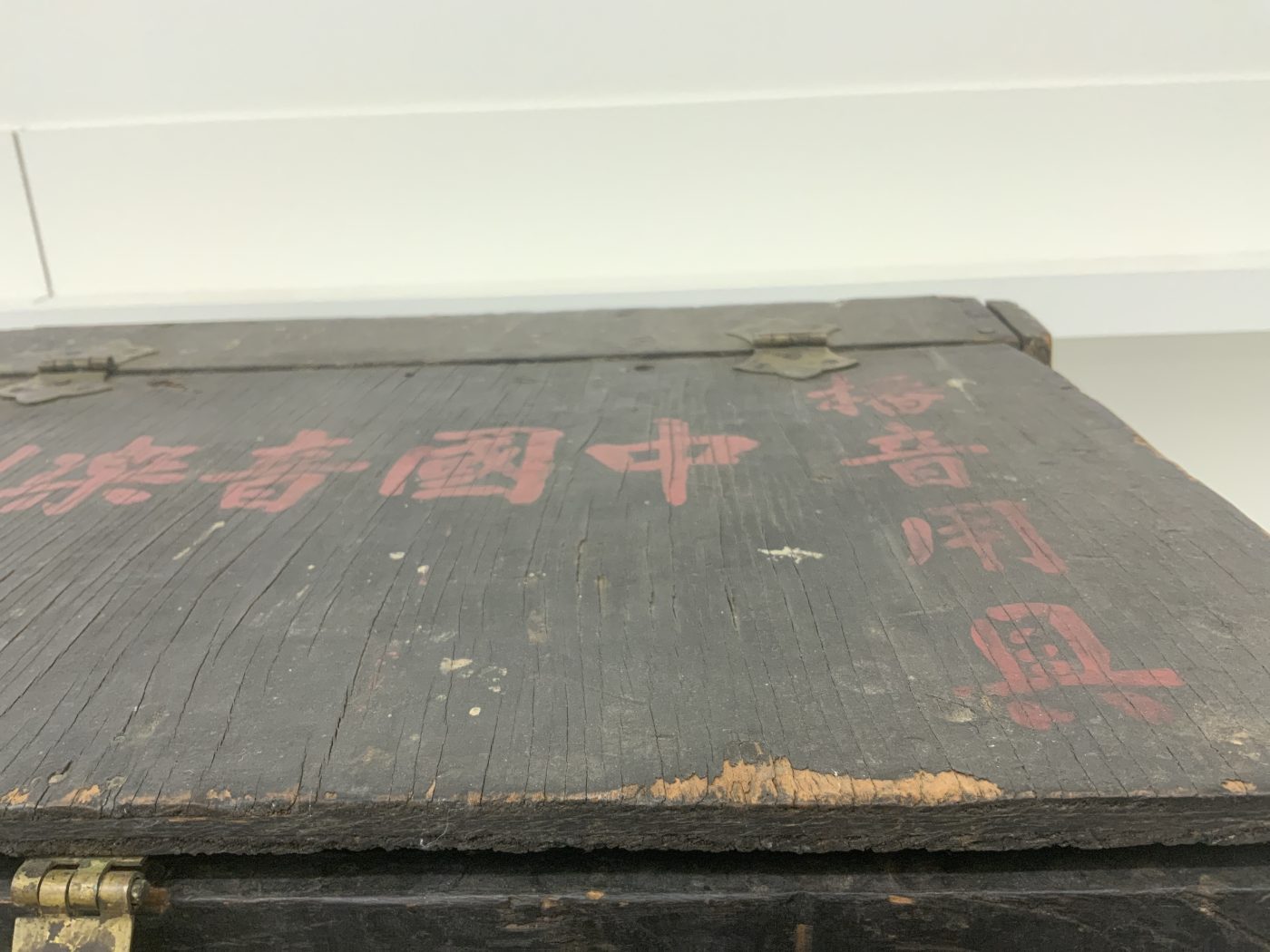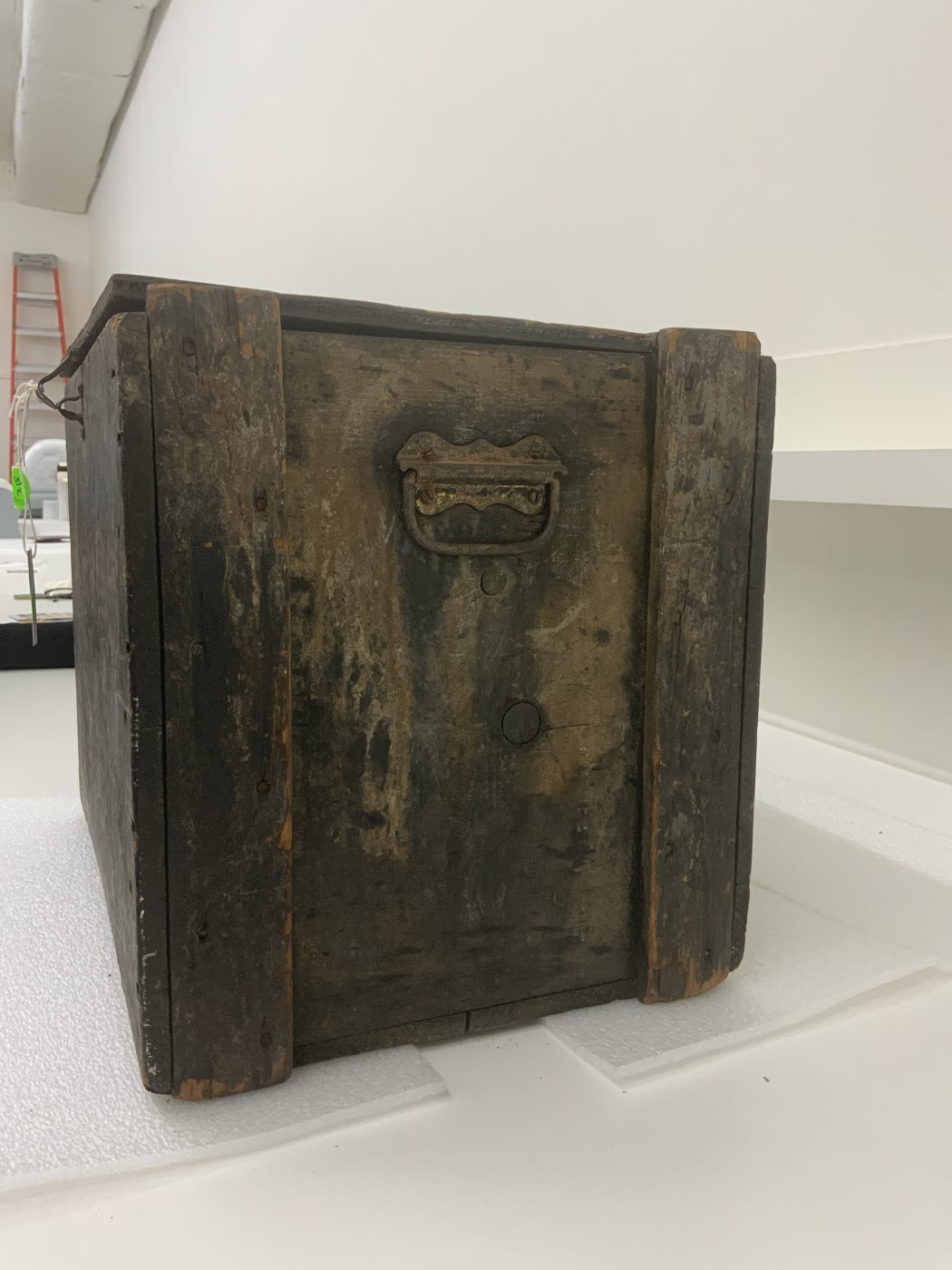This wooden trunk was used by a Cantonese opera troupe to store makeup and hair accessories and is part of MOCA’s important 600+ object collection of costumes, props, instruments, posters and photographs of the Chinese Musical and Theatrical Association (CMTA). The CMTA, which opened a theater in 1931 and put on live performances until its closure in 2018, has a long, rich history of keeping alive the Cantonese opera art form and cultural tradition among New York’s Chinese American and immigrant community.
This particular trunk, quite modest and deteriorated in condition due to extensive use and age, perhaps reflects the humbleness of the particular actor or troupe. The more renowned the Cantonese opera actor, the more elaborate (and expensive) their costumes can get, and it was not uncommon for them to commission quite elaborately decorated trunks to match the elevated grandeur of their costumes.
The photographs below show examples of the makeup and hair accessories that would have been stored in this trunk, and actors backstage being made up in the iconic face paint that would have easily allowed the audience to identify an actor’s particular role. Cantonese opera’s distinctive face painting practices date back to early performances when actors typically performed to large crowds under poor stage lighting and needed to project their emotions and identity to their furthest audience members, seated a considerable distance away.
